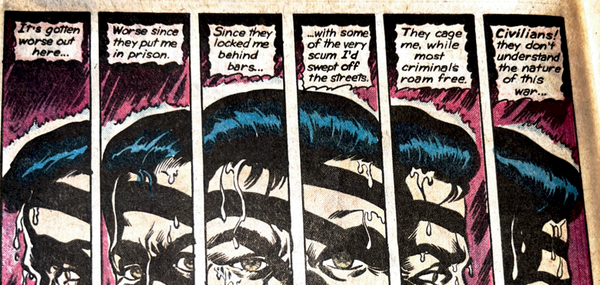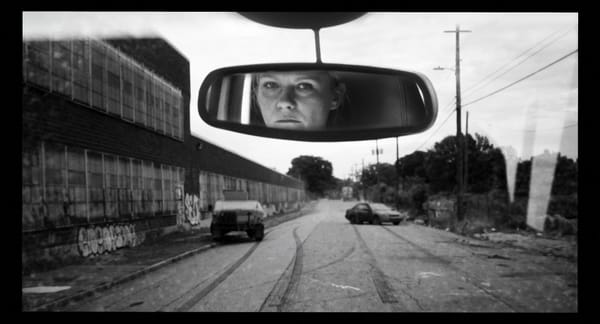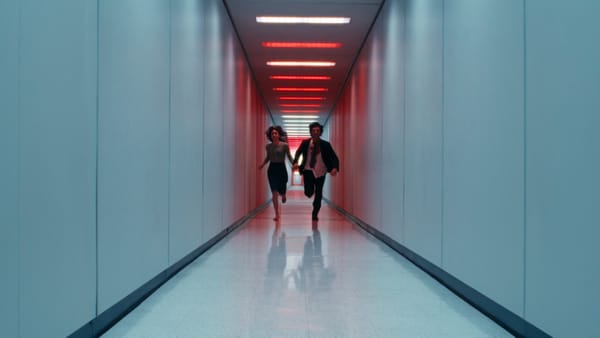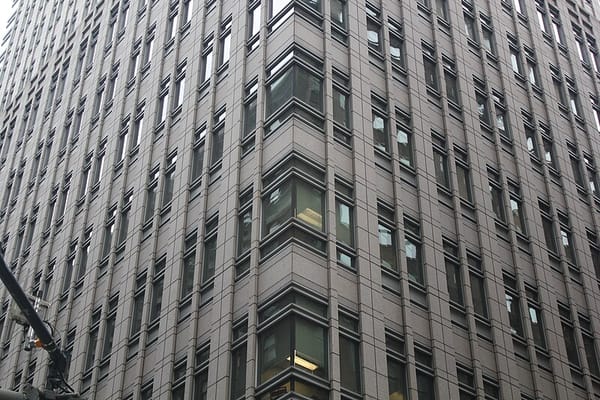The Unthinkable Becomes Thinkable
Notes on Alex Garland's "Civil War"
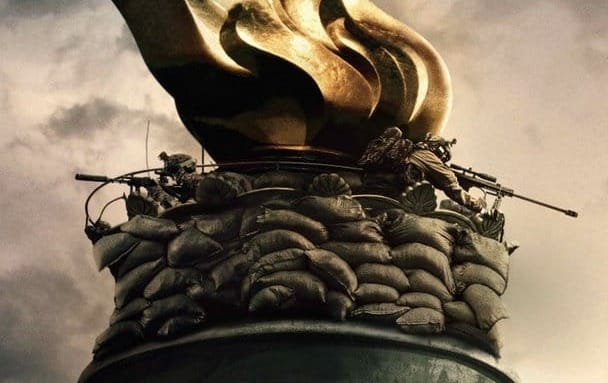
Dystopias—in fiction and reality—come in different flavors.
When Donald Trump was elected in 2016, 1984 and The Handmaid’s Tale shot to the top of the bestseller lists.
1984’s evocation of totalitarian gaslighting felt prescient in light of Trumpian “alternative facts.” The Handmaid’s Tale resonated with fears of rising Christian nationalism, the reassertion of an oppressive patriarchy, and rollbacks of women’s rights.
In 2024, Alex Garland’s Civil War depicts a different kind of dystopia: a near-future America torn apart by ideological divisions, where the threat comes not just from the actions of an authoritarian regime, but from the collapse of social cohesion and democratic norms.
Last Friday night, I rewatched the movie.
On Saturday evening, someone tried to assassinate former President Donald Trump.
If there is one takeaway from Civil War it’s that yes, it can happen here. Saturday night made me wonder if it’s already started.
Civil War achieves its brutal effectiveness by casting a technically deft portrayal of modern civil conflict against a chillingly familiar backdrop: a United States torn apart by deep-seated ideological divisions, political polarization, and the erosion of democratic norms.
From the first scene, in which a suicide bomber abruptly rushes an American flag into a New York City protest and blows herself up, we are confronted with a jarring juxtaposition of recognizable settings with events that are not supposed to take place here.
On the one hand, this is an utterly recognizable America of abandoned strip malls, road trips, rural gas stations, and Main Street towns. On the other, there are scenes of violence reminiscent of The Killing Fields or Platoon. The most jarring of these are not of helicopters, tanks, or urban combat but of casual war crimes—torture, summary execution, and mass graves.
While Garland clearly means to draw on the emotional power of our current political fears, the exact causes of the war are left ambiguous. We learn the president is a tyrant who is serving his third term, has abolished the FBI, and has launched air strikes against American citizens. The movie’s main character, photojournalist Lee Smith (Kirsten Dunst), made her reputation covering the “Antifa Massacre.” Lee and her colleagues, Joel (Wagner Moura), Sammy (Stephen McKinley), and Jessie (Cailee Spaeny), are making a pilgrimage to Washington D.C. to see if they can get an interview and photograph of the President before the city is overtaken by Western Alliance forces.
Some critics have suggested that the film’s non-partisan stance short-circuits real explorations of how the country could come to such a terrible state. I don’t think this is entirely fair—it’s pretty clear in the film if you’ve aligned yourself with an aspiring authoritarian who demonizes the media, threatens to serve more than two terms, and eliminates checks on his authority, you’ve chosen the wrong side.
But the tyranny isn’t the point of the film. The point is what tyranny leads to.
In many countries, autocrats successfully embed themselves in power for years, maintaining control with constant but relatively low-level threats of violence. This is not the future of Civil War. If the movie intuits anything about the current political moment, it’s that the United States is less likely to slip quietly into Orbanism than it is to splinter into factions in which no one is sure what side they’re on.
In Civil War, the majority of terrifying encounters are with people whose allegiances are unclear. In one scene, the reporters come across snipers who are pinned down by a gunman in a house across a field. The snipers have no idea who is shooting at them. When Joel asks what side they’re on, the spotter says. “No one’s giving us orders, man. Someone’s trying to kill us. We’re trying to kill them.”
How likely is a real civil war in the coming years?
My friend Steven Zeitchik recently interviewed several experts about the possibility. Their conclusions were … mixed.
According to these experts, key variables influencing political unrest include:
“‘tolerance for political violence,’ ‘democratic backsliding’ (the evaporation of longstanding norms like certifying elections or just kicking major presidential candidates off ballots on technicalities) and ‘ideological outbidding’ (the need for elected officials to one-up each other with their extremism).”
Clayton Besaw, one of the researchers Zeitchik interviewed, cited data suggesting that "structural factors for political violence … are similar to the time right before the Civil War.” Others he talked to, like Philip Schrodt, were (slightly) less alarmed. According to Schrodt:
I think Trump being re-elected would be bad for democracy. We might be on the edge of becoming [modern-day Hungary], or maybe Poland before the recent election … But on the edge of civil war like Russia in 1917 or Germany in 1918? I don't see that.
Given the alternatives, something like Viktor Orbán’s Hungary might seem like a fairly benign endpoint for America’s current anti-democratic drift. I have my doubts that we will land there. It’s much easier to control media, business, and elections in a small, landlocked, relatively homogenous nation of 9.5 million people than in a continent-spanning global superpower of 330 million. I find it hard to believe that the anti-Trump, anti-MAGA coalition will quietly acquiesce to blatantly authoritarian power grabs without a fight.
Consider January 6th. Whatever the architects of Trump’s plan thought was going to happen, it seems unlikely that 80 million Biden voters would have quietly accepted being disenfranchised by a mob invading the capital or the substitution of legitimate electors with an unelected alternative slate.
How would the Trump side have responded to mass protests? As Jeffrey Clark, the environmental lawyer who Trump tried to install as Attorney General, said, “That’s what the Insurrection Act is for.”
In other words, we know that in 2020 at least some members of the administration were aware that overturning the election would lead to “riots in the streets”, and that in response, the administration should invoke an 1807 law that would allow him to deploy the national guard and military to “enforce laws” and “suppress rebellion.”
Now imagine January 2025, as the administration attempts to make good on its promise to deport 10-15 million undocumented people. As journalist Radley Balko points out, this would be “the second-largest forced displacement of human beings in human history, on par with Britain’s disastrous partition of India, and second only to total forced displacement during World War II.”
As Jamelle Bouie argues, this would undoubtedly lead to
“indiscriminate roundup of anyone who might appear to be an immigrant — a mass campaign of racial and ethnic profiling…To reach this goal … Do we not think that there would be violent resistance to agents storming homes, churches and businesses to seize and detain people?”
Now imagine Friday’s attempted assassination taking place not in July of 2024 but in February or March of 2025, under a restored Trump administration, bent on retaliation.
How long would it take for the administration to declare martial law? And how would the country react?
It says something terrifying that even after being shot Trump’s demagogic instincts overpowered self-preservation long enough for him to pump his fist in the air and shout “Fight, fight, fight!”
In Civil War, we see that things don’t necessarily turn out well for tyrants. As Sammy says at one point, “The ones that get taken, Qaddafi, Mussolini, Ceausescu, are always lesser men than you think.” But as bad as it may turn out for the Qaddafi’s, Mussolini’s, Ceausescu’s in the end, it’s worse for the rest of us.
All of this suggests that maybe the real take-home of the film is that there is no winning in a real civil war and that we should take whatever off-ramps we can before resorting to violence, no matter what the provocations of the other side.


